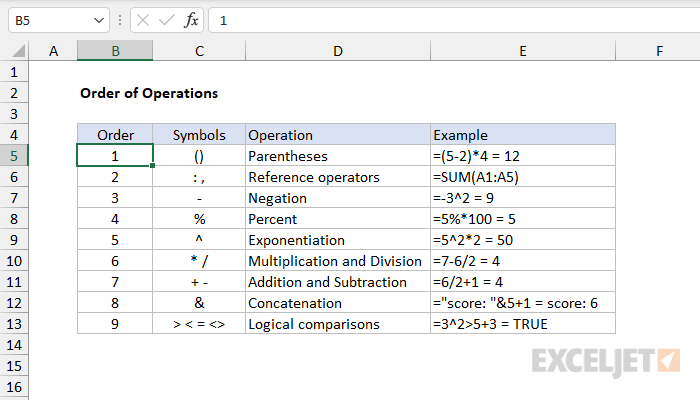When evaluating a formula, Excel follows a standard math protocol called "order of operations". In general, Excel's order of operation follows the acronym PEMDAS (Parentheses, Exponents, Multiplication, Division, Addition, Subtraction) but with some customization to handle the formula syntax in a spreadsheet.
First, any expressions in parentheses are evaluated. Parentheses essentially override the normal order of operations to ensure certain operations are performed first.
Next, Excel will resolve references. This involves replacing cell references like A1 with the value from the cell, as well as evaluating range references like A1:A5, which become arrays of values. Other range operations like union (comma) and intersection (space) also happen at this time.
Next, Excel will perform exponentiation, negation, and percent conversions (in that order), followed by multiplication and division, addition and subtraction, and concatenation. Finally, Excel will evaluate logical operators, if present.
In summary, Excel solves formulas in the following order:
- Parentheses
- Reference operators
- Exponents
- Negation
- Percent
- Multiplication and Division
- Addition and Subtraction
- Concatenation
- Logical operators
Note: If a formula contains multiple operators with the same priority (e.g. multiplication and division, or addition and subtraction), Excel will evaluate the operators from left to right.






